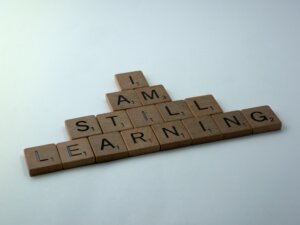I recently had the pleasure of reviewing Naomi Karten‘s book on Presentation Skills for Technical Professionals and found it an excellent resource, not only for its intended audience but for others who may be giving technical presentations such as trainers. Naomi Karten, the author of several books, including Presentation Skills for Technical Professionals: Achieving Excellence and Changing How You Manage and Communicate Change: Focusing on the Human Side of Change, is my guest blogger today. You’ll appreciate her insight and guidance on facilitating learning through mimicking real life simulations in the classroom.
To Facilitate Real Learning, Use Experiential Training
by Naomi Karten
No doubt, you’ve attended training sessions in which the instructor reads from bullet-point-laden slides to students seated in rows, like second graders. For some topics, this passive approach to training is appropriate. But for helping people develop critical organizational skills such as communicating effectively, building relationships, and managing change, nothing beats experiential training.
Experiential training revolves around the use of simulations—activities designed to mimic real-life situations. In participating in these activities, students learn about themselves and others, and because they are fully engaged rather than passive listeners, what they learn tends to have staying power.
Here’s an example of a simple simulation that I’ve used dozens of times in my presentations on managing change. After introducing the topic and offering some initial comments, I ask everyone to gather their belongings and move to a seat that’s at least two seats away from their present seat.
When people get settled, I ask for their reactions to being asked to move. Keep in mind that these are people who lead (and experience) large-scale organizational or technological change. Surely, something as simple as changing their seats would be a minor matter. Or would it?
Here are some typical responses:
- I didn’t want to move. I liked where I was.
- It seemed like a fun thing to do.
- I had the perfect seat and I wanted to stay there.
- My seat had a bad leg. I was glad to move.
- It seemed silly.
- I resented having to change where I was.
- I didn’t understand the purpose, but it was fine.
- I got here early to get the best seat and you made me move.
- I was thinking of refusing to move, but finally I went along.
The presence of so many different reactions, from resentment and anger to eagerness and curiosity, is an eye-opener for those who assume everyone else must have had the same reaction they did. This range of reactions beautifully sets the stage for my information on how people experience change and what that means for change leaders.
About a half-hour further into the presentation, I ask people how they are now with their new seats. The woman who said she had the perfect seat and wanted to stay there admitted that her new seat was just fine. Others voice similar comments; though they may not have been eager to move, they adjusted to their new location. Their realization of the change process they just experienced enables them to join me in identifying guidelines for reducing the duration and intensity of the turbulence associated with change.
This experiential approach invariably helps people gain insights both into how they themselves respond to change and how they can better manage change in their own organizations. In addition, it generates some fascinating discussion. It’s full of learning for those present including, I’m happy to say, the presenter.
*******
For more resources about training, see the Training library.
Naomi Karten (www.nkarten.com) is the author of several books, including Presentation Skills for Technical Professionals: Achieving Excellence and Changing How You Manage and Communicate Change: Focusing on the Human Side of Change. Contact her at [email protected].
 Sections of this topic
Sections of this topic















